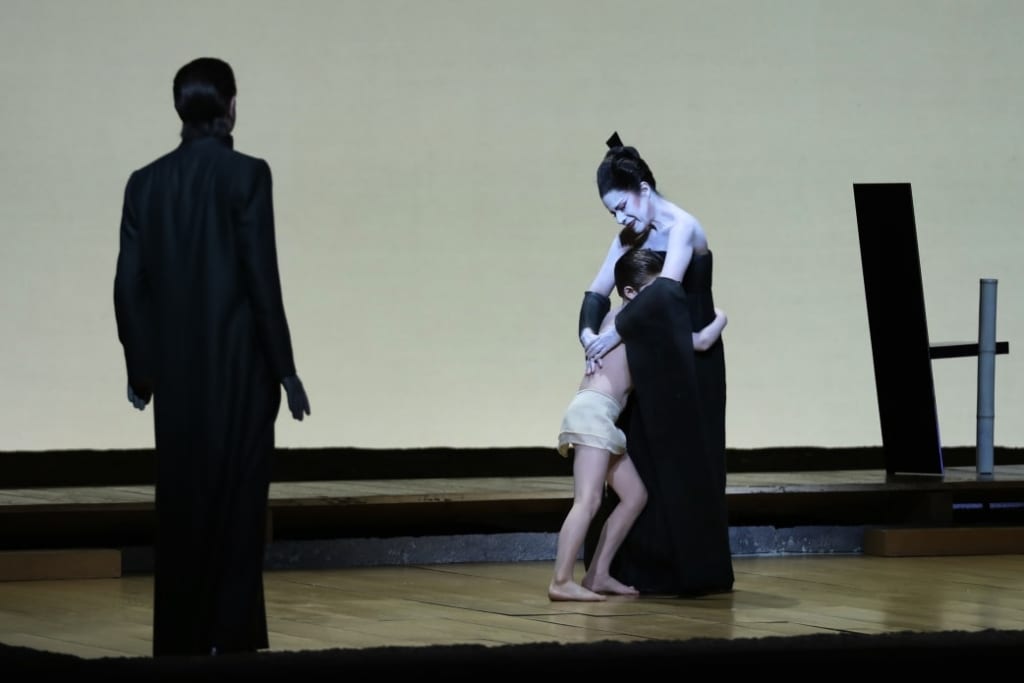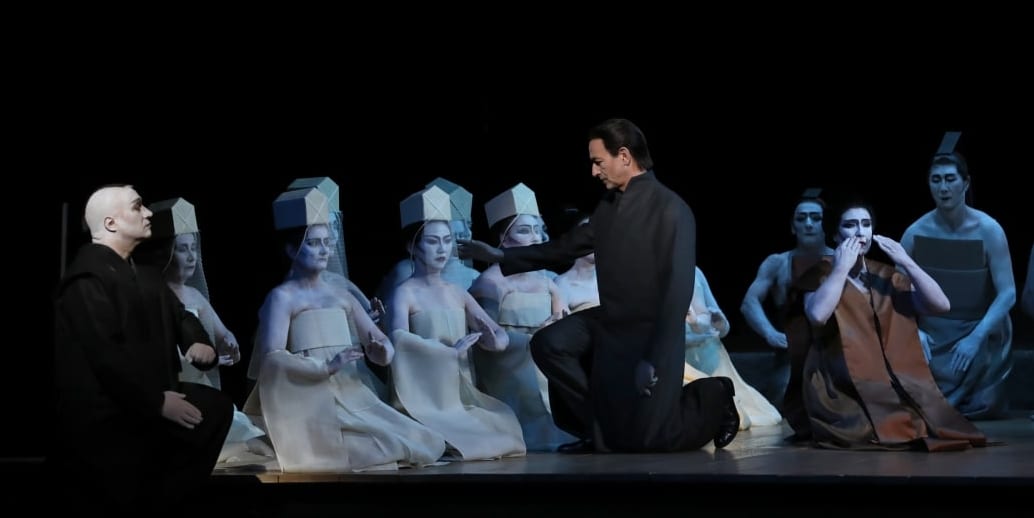The current production of Madama Butterfly at the Opera de Paris is the latest revival of the work created by Robert Wilson in 1993. The story is notoriously pivoted on the figure of the geisha Cio-Cio-San the victim of two culturally opposing and sometimes violent worlds in the mid-19th century: an intolerant Japan anchored in its traditional values, versus a politically and economically ascendant United States more open but also quasi-imperiallist, disrespectful of and not caring about the culture of countries it was establishing relations with. Between these two worlds Cio-Cio-San is crushed: her abnegation and enduring hope succumb to the reality of these male dominated worlds. Wilson linearizes and streamlines the opera leaving only a hint of Japan in the mimicry. Wilson was inspired by Japanese theatre in his approach therefore he manages to grasp its spirit: the characters act as if inhabiting a play of light and shadows. The stage light in the background and the costumes are the only notes of colour. Does this approach work for this opera? Yes and no: it succeeds in suggesting the idea of Japan, it forces the spectator to focus on music and drama without frills and it is very elegant, a rather minimalistic Japanese inspired style. But the drama is forced into a strait-jacket, The approach is less effective in the most intense moment when everything is about to explode. Unfortunately, a technical problem had caused the second part to be performed in a concert form on the night that I attended so I could not fully appreciate Wilson’s approach.
The role of Cio-Cio-San is entrusted to the soprano Ana Maria Martinez who gives an elegant interpretation and captures the fragility and underlying strength of the character but does not emphasizes the narrative arc from naïve adolescent to a tragic heroine, Her voice possesses beautiful pianissimos but fails in its projection, and is weak in the mid to low register. The result is half of a Butterfly, which means a characterization that is not very effective in the already rigid frame conceived by Wilson.

Giorgio Berrugi’s Pinkerton on the other hand has a ringing tenor’s voice and perfectly interprets the role of the outrageously self-absorbed and ultimately cowardly villain: he portrays all the nuances of the character from the seductive tones in the first act to the falsely pathetic ones in the second act.
The faithful servant Suzuki sung by Marie-Nicole Lemieux is very passionate and powerful vocally, but since the second act was in the form of a concert most of her interpretation was missed.
Laurent Naouri in the role of the Consul is outstanding: with his warm and vibrant timbre he manages to perfectly express the affection and the respect for Butterfly reinforcing my idea that excellent interpreters can make the all the difference even in Wilson’s rigid and constricting frame.
Giacomo Sagripanti conducts the orchestra capturing the subtleties of Puccini’s score. Musically, Puccini’s search for exoticism, a fashion in vogue all over Europe at the beginning of the 20th century, led him to draw inspiration from Japanese popular melodies and to fuse those sounds with his harmonic lines. The oriental evocations contrast with the notes of the American hymns and the western melodies, emphasising the differences of those two worlds.
I think that it is interesting to experience Wilson’s original approach to this classic opera: he does not distort the meanings of Puccini’s work and succeeds in portraying the timeless ideal of old Japan

